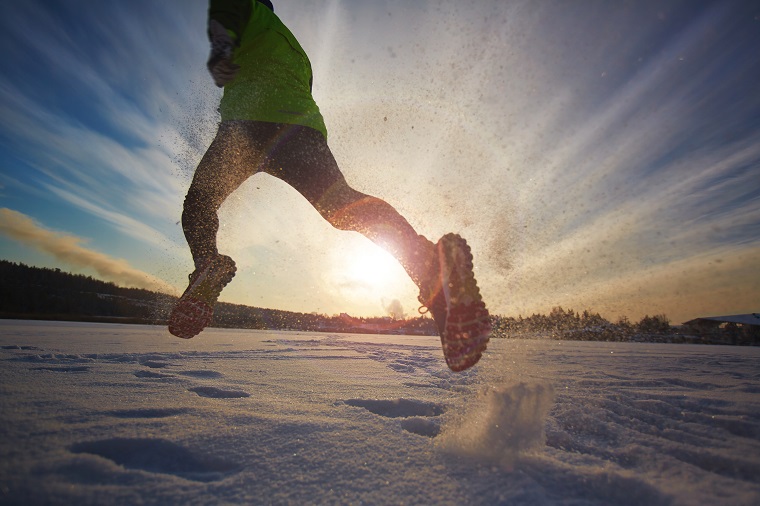Winter Blues? Study Suggests Exercise Builds both Fitness and Cold Tolerance
By Daniel Cervone
28 January 2019

Have you ever been stuck out in the freezing cold and found yourself shivering for warmth? Beyond your body’s shudders, there’s even more happening at the tissue and cell level to help you battle the cold. A new study by researchers in the Department of Human Health & Nutritional Sciences has begun to disentangle our complex response to the cold – and exercise may play an important role.
When exposed to extreme cold, our first line of defense is to shiver. Shivering is caused by small, involuntary muscle contractions that generate heat, but inevitably our muscles will fatigue. Luckily, mammals have also evolved “non-shivering” tactics to defend against cold. These tactics are largely centered around adipose tissue – more commonly known as fat.
As you may have already guessed, fat offers great insulation. However, fat cells also have mechanisms that enable them the use of nutrients (such as carbohydrates) to generate heat instead of usable cellular energy – a process that, in response to the cold, has been coined “non-shivering thermogenesis”.
“Your body has different types of adipose tissue, stored in a variety of ‘depots’,” explains Carly Knuth, a graduate student who authored the study with Prof. David Wright. “Brown fat makes up a tiny portion of our total body fat but is very metabolically active in generating a lot of heat. Whereas, white fat (which makes up most of our fat) has classically been considered a storage site for the fat you consume in your diet.”
Knuth and Wright sought to distinguish the relative contribution of shivering (muscle) and non-shivering (fat) mechanisms in keeping mice warm – and whether exercise could improve the mouse’s tolerance.
“It is now recognized that white fat can become browner - sometimes termed the ‘browning’ of fat - with exercise training and thus, become more metabolically active. This may further contribute to keeping animals warm during a cold challenge, and even prevent metabolic diseases, like diabetes,” says Wright.
To test their theory, Knuth and Wright provided mice with a cage wheel on which they could voluntarily run for 12 days before being subjected to a 48-hour cold (4℃) challenge - brrrr! Mice that were not able to exercise served as a control. During the two-day cold challenge, the researchers monitored mouse body mass, food intake and core temperature. Afterwards, they collected samples of adipose tissue and muscle for further protein analysis.
Mice that were able to exercise daily leading up to the cold test had a higher body temperature and lost less weight in their effort to stay warm. However, to the researchers’ surprise, “non-shivering” mechanisms could not explain the cold-protection conferred by exercise in these mice. Specifically, their resilience to the cold was not due to an increase in fat “browning” and the proteins responsible for generating heat in any of the described fat depots.
“Shivering helps generate more heat than non-shivering means,” notes Wright. “It appears that simply exercise training muscle may help mice better respond to the cold by contributing to more efficient shivering. There also exists the possibility that muscle itself possesses its own non-shivering mechanisms for heat production –but this remains to be seen.”
The study was funded by the Natural Science and Engineering Research Council of Canada and carried out with collaborators at the University of Copenhagen.
Read the full article in the Journal of Physiology.
Read about other CBS Research Highlights.